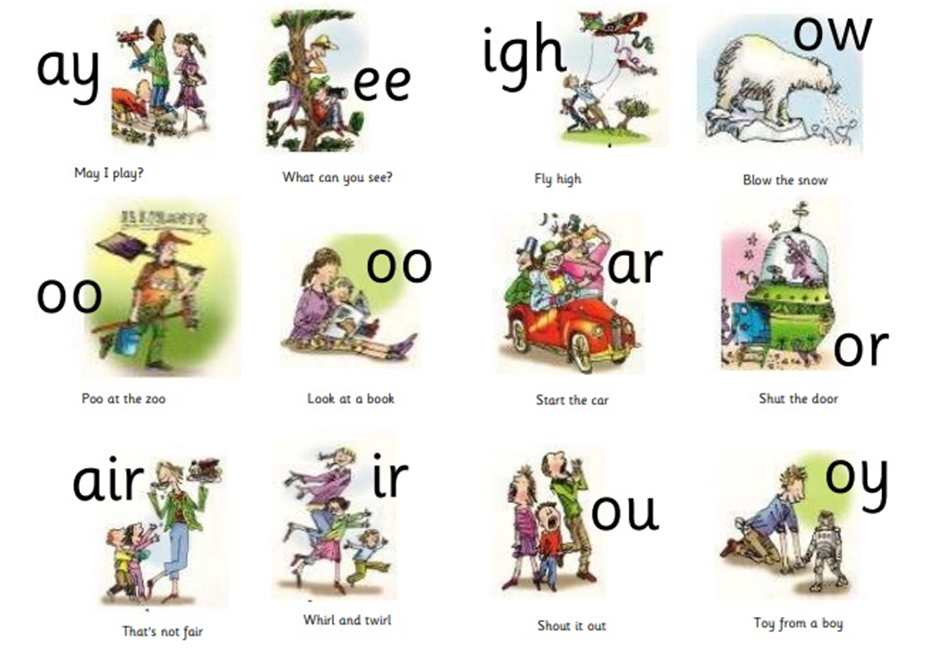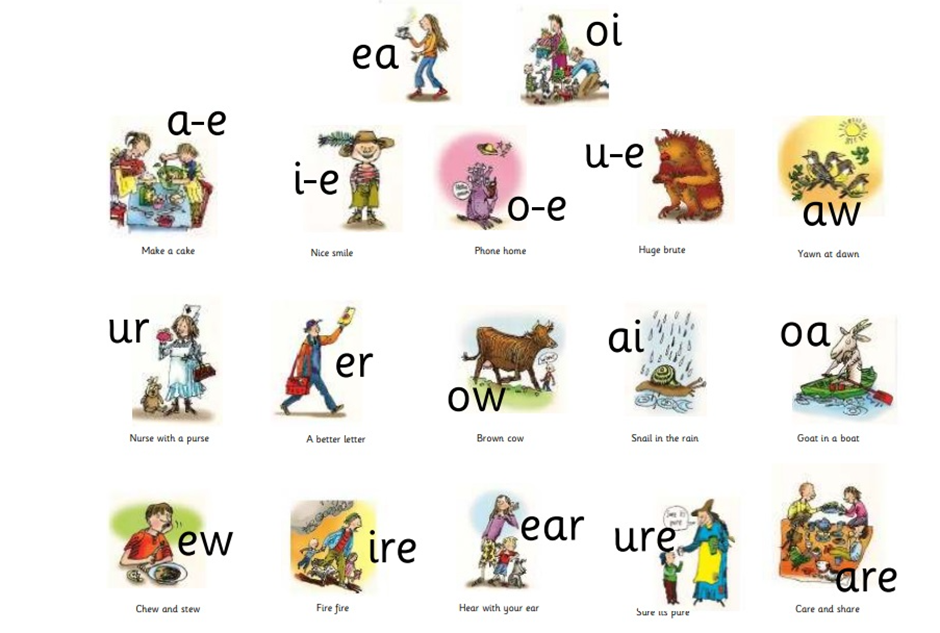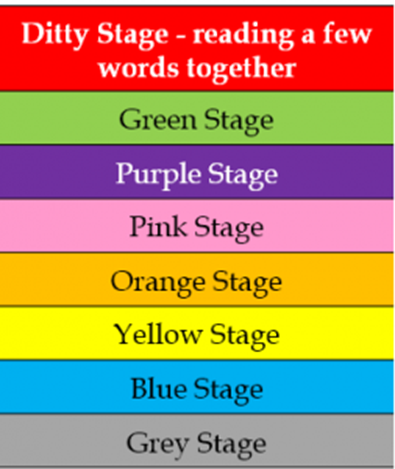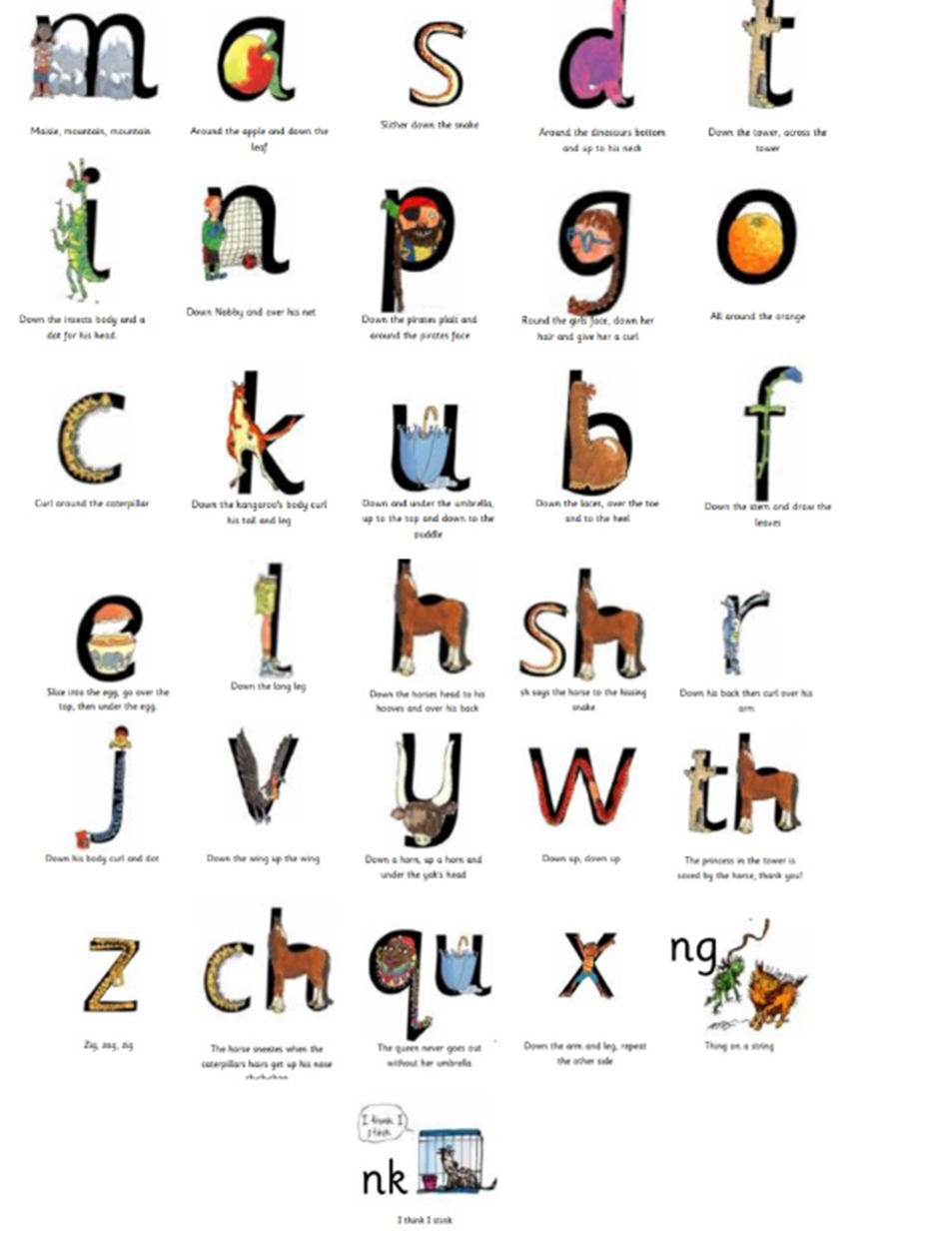Phonics
How We Teach Phonics
 The Government strongly recommends the use of synthetic phonics when teaching early reading skills to children. Synthetic phonics is simply the ability to convert a letter or letter group into sounds that are then blended together into a word.
The Government strongly recommends the use of synthetic phonics when teaching early reading skills to children. Synthetic phonics is simply the ability to convert a letter or letter group into sounds that are then blended together into a word.
At Templars Primary School, we use the Read Write Inc. Phonics programme (RWI) to get children off to a flying start with their reading. RWI is a method of learning, based upon letter sounds and phonics, and we use it to aid children in their reading and writing.
Children have daily phonics lessons and are assessed and grouped regularly according to their current ability. The scheme is split into 3 sets of sounds. Please see the appropriate section below to find further information and resources related to your child’s current RWI stage.
First, your child will learn to read:
- Set 1 Speed Sounds: these are sounds written with one letter:
- Set 1 sounds written with two letters (‘special friends’).
- Simple words containing these sounds, by sound-blending.
- Read words in carefully levelled Red, Green and Purple Storybooks.
Each sound is linked to a picture hook and short rhyme to help the children learn and remember them.
Set 2 Sounds
Now that your child knows all their single sounds, some simple ‘special friends’ and has learnt to blend simple words, they will now learn:
- To read and recognise Set 2 Speed Sounds: ay, ee, igh, ow (as in blow) oo (as in zoo) oo (as in look), ar, or, air, ir,
 ou (as in out), oy
ou (as in out), oy - To read words containing these sounds
- Read a wider range of ‘red words’ (words that cannot be read using phonic skills).
- To read Pink, Orange and Yellow Storybooks, building speed and fluency.
Each sound is linked to a picture hook and a rhyme to help the children learn and remember the sounds.
Set 3 sounds
Your child is now growing in reading ability and confidence. In Set 3, they will learn to:
- Read Set 3 Speed Sounds: ea oi a-e i-e o-e u-e aw are ur er ow ai oa ew ire ear ure
- Read words containing these new sounds
- Read further ‘Red words’ that cannot be read using phonic skills.
- Read Blue and Grey Storybooks with increasing speed.
Each sound is linked with a picture and rhyme to help the children learn and remember them.
Reading with Read Write Inc.
Once children reach the end of Set 1, they know enough sounds to read simple sentences. 
Children progress through a range of colour levels. Each level is carefully matched to the child’s current phonic ability. This means children are able to read and access texts by themselves and quickly grow in speed and confidence. The progression through book levels is shown below:
RWInc. Reading Book Progression
As part of the programme the children have a daily 45 minute phonic lesson and during this lesson they will have:
Speed sound lesson – introduced to new sound and recap all sounds (a new sound is taught every day working from Set 1, Set 2, Set 3 and Extra Sounds)
Read Green Words (words that contain a new sound or a previously taught sound – see further information below)
Read a book linked to correct colour stage.
Read Green Storybook words.
Read Red Words (non-decodable high frequency words – see further information below)
Read ‘Alien Words’ (made up from all sounds)
Fred Finger Spelling
Spelling rule activity
Hold a Sentence (dictation – based on new or previously taught sound – see further information below)
Green Words
Green words are important words that the children will encounter in the story that they can phonetically decode. They are split into Speedy Green (Words that children will encounter often) and Story Green (Words that are specific to the story).
Firstly, children practise reading these words together with their teacher. They discuss the meanings of these words where needed so that children understand this new vocabulary before they begin reading.
Children then practise reading their green words.
Red Words
These are words that children cannot use their sounds to read and need to be recognised by sight. Children practise and discuss these words with their teacher.
Hold a sentence
This is a dictation activity. The teacher will read a sentence and practise saying this whole sentence with the children. Next, the teacher will model how to write this sentence using the correct punctuation. This will then be hidden. The children then write this sentence from memory. Finally, the children check their sentences against the teacher model.
